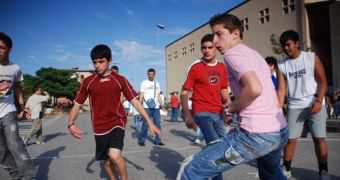Recent studies show that people are less likely to recognize kidnapped children from beautiful pictures than from images depicting them as dirty or sad. When a kid goes missing, usually the police show around pictures of the victim in a happy stance, as these images usually come from the family and depict happy moments.
But scientists argue that it can be very difficult for people to recognize the happy kid they see in distributed photos in dirty and physically abused children that are walking the streets. If kidnappers take advantage of their victims, then the kids could be seen on the streets in very rough shape, and may look different as compared to how they appear in happy pictures, authorities caution.
"If an adult is shown two pictures of a child with similar appearance, both 'clean' or both 'dirty', recognition is good. However, if an adult sees two pictures of the same child but with differing appearance, then recognition is poor," said Mississippi State University's Assistant Professor of Psychology Dr. Vicki Gier. In the study he conducted, some 150 adults were shown both clean and "dirtied" pictures of children.
The recognition percentages were good if the children the test subjects were shown resembled the photos they'd just seen. However, if the kids were in different states, the recognition capabilities the adults exhibited dropped considerably. That's why policemen advise parents to have both types of pictures available, in case their children disappear.
"If both types of facial appearance were shown to the public or possible eyewitnesses, the chances of recognizing the child may increase," argued Gier. If TV stations broadcast both pictures simultaneously, then the odds of someone recognizing the victim increase exponentially, specialists say. This measure could prove extremely beneficent for solving abduction cases faster than before and for improving children-related crime statistics considerably.

 14 DAY TRIAL //
14 DAY TRIAL //